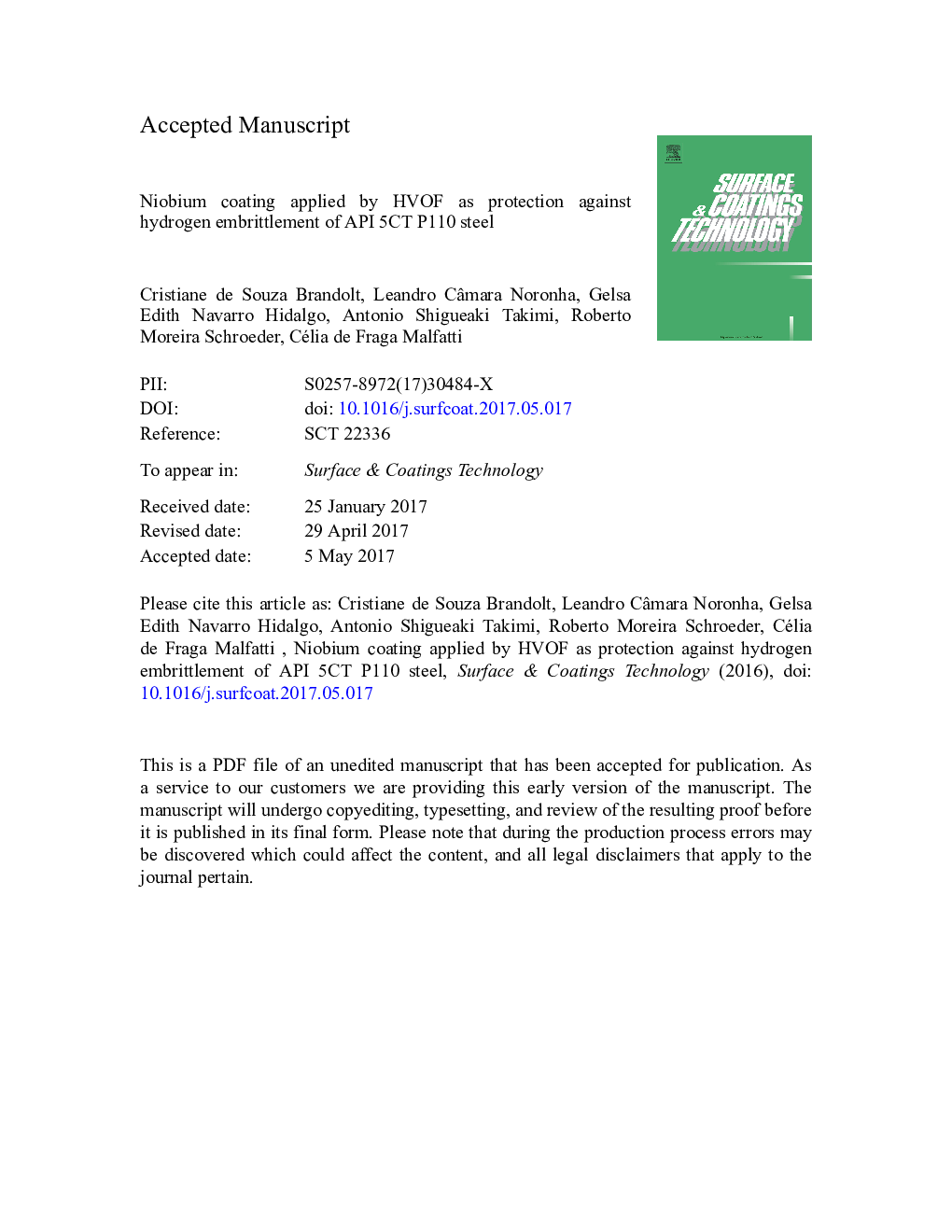| Article ID | Journal | Published Year | Pages | File Type |
|---|---|---|---|---|
| 5465126 | Surface and Coatings Technology | 2017 | 51 Pages |
Abstract
Thermal spraying applications have been growing because of the advantages of these coatings. However, the use of thermal spray coatings to protect components against hydrogen embrittlement has not yet been the subject of studies. In this work, the deposition of niobium coating by high velocity oxygen fuel (HVOF) thermal spraying is performed to obtain a protective barrier against hydrogen intake by the API 5CT P110 steel. The coatings were characterized by scanning electron microscopy, optical microscopy, X-ray diffraction, roughness, porosity, hardness and by monitoring mechanical behaviour of samples in tensile test submitted to previous and simultaneous hydrogen charging. To evaluate the hydrogen absorption capacity, the mass quantities of hydrogen in the API 5CT P110 steel and niobium coating were obtained. The results showed that the niobium coating acted as a barrier to hydrogen intake, minimizing the effect of hydrogen on the mechanical properties of API 5CT P110 steel. Hydrogen measurements showed that the coating had a high hydrogen trapping capacity, 7.5 times higher than that of steel.
Related Topics
Physical Sciences and Engineering
Materials Science
Nanotechnology
Authors
Cristiane de Souza Brandolt, Leandro Câmara Noronha, Gelsa Edith Navarro Hidalgo, Antonio Shigueaki Takimi, Roberto Moreira Schroeder, Célia de Fraga Malfatti,
